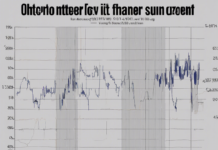Cancer develops because of the uncontrolled division of body cells, resulting in the formation of abnormal cells that damage cells in other tissues of the body.
Various causes, like radiations, physical-chemical and biological mutagens, infections, and genetic vulnerability can raise your chances to get cancer.
Risk factors are those events or substances that raise the risk of cancer development in the body or that lead to its recurrence.
However, these factors don’t directly cause cancer because some people do get affected in their presence while others don’t.
In the following sections, we will discuss some of the significant risk factors involved in cancer development.
Environmental Exposure: Our environment is full of physical and chemical carcinogens that can raise the risk for cancer development. Carcinogens are cancer-causing agents that can be present anywhere: your home, workplace, gym, or the outdoors.
Environmental carcinogens include substances like smoke, sunlight, chemicals like benzene, and minerals like asbestos.
Asbestos and its related materials like zeolites can cause mesothelioma, which is a cancer of the linings of the heart, lungs, and peritoneal cavity.
Patients with mesothelioma cancer who were exposed to asbestos to the mineral at their workplace in the past due to the employers’ negligence can file a mesothelioma lawsuit against the employers. The compensatory amount from the claim can help you pay for the treatment and other troubles that befall victims of mesothelioma.
Chromosomes and Genes: Mutations in the genes of our DNA contribute to the formation of such proteins that can regulate and alter cell division, leading to the development of cancer.
Gene mutation usually occurs due to various physical, chemical, and biological agents like drugs, viruses, sunlight, and infections, while in some cases the mutating traits are inherited.
There are two types of genes called Oncogenes and Tumor Suppressor Genes that are involved in cancer development.
Oncogenes are cancer-causing genes that are formed due to the mutation in their normal and regulated state. These genes give the cells wrong signals that lead them to multiply uncontrollably.
Tumor Suppressor Genes suppress the development of cancer by coding such proteins that can decrease or suppress the growth of cancerous cells and proteins. Cancer develops when the function of tumor suppressor genes is weakened and the activity of oncogenes is strengthened due to the gene mutation process.
Radiation Exposure: Extended exposure to a certain wavelength of radiation like UV rays has enough energy to cause cancer by damaging DNA.
Ionizing radiations such as X-rays which are usually used in CT scans are carcinogenic and frequent exposure to a high dose of X-rays increases the risk for cancer.
Exposure to radioactive substances in the environment such as radioactive radon gas can also cause cancer.
Radon gas is dispersed in the air from the soil by the breakdown of the radioactive element Radium. Usually, this gas is not harmful. But inhalation of the gas in high doses, from the accumulation of it inside houses or buildings near the radioactive substance, will make you susceptible to developing lung cancer.
Tobacco: People who smoke are often times in the grips of various diseases, especially lung cancer. Smoking tobacco products causes cancer in 9 out of 10 cases.
The tobacco smoke contains 70 different carcinogenic chemicals, and with each drag, these chemicals enter your body and start accumulating inside the lungs, where they eventually cause cancer.
However, smokers aren’t the only ones at risk of developing cancer, the people around someone who smokes are taking in secondhand smoke and are equally at risk of developing it.
In America, 30% of cancer deaths have smoking as the underlying cause, and out of those 80% are lung cancer cases.
Smoking tobacco can also cause cancer of the mouth, esophagus, kidney, and bladder. Quitting smoking can reduce your risk for developing cancer and other respiratory disorders.
Infections: Various types of infection-causing agents such as bacteria, viruses, and parasites can cause cancer or increase your risk for cancer development.
Viruses cause cancer by disrupting the pathways which regulate cell division. Other viruses suppress the immune system, while others alter and damage the DNA to clear way for cancerous cells to grow.
There are three types of cancer-causing infections: Hepatitis-B and -C Viruses, Human Papillomavirus, and Helicobacter pylori. Human papillomavirus plays an important role in developing cervical, vaginal and vulvar cancers.
Alcohol: Alcohol belongs is an irritant that promotes the production of different types of carcinogenic chemicals in the colon (large intestine). Alcohol in our body is converted into a chemical called Acetaldehyde that damages DNA and prevents the body from repairing itself.
In women, alcohol consumption may affect the breakdown of estrogen hormone, which leads to an increase of the hormone in the blood.
This elevated estrogen level can raise the risks for uterine, ovarian, and breast cancers in women.
Further, the consumption of alcohol can also raise the risks for the development of the following cancers:
- Neck and Head, mainly of the larynx, mouth, and throat
- Uterine and breast cancer
- Esophageal cancer
- Colorectal cancer
- Liver cancer
Diet: A diet of fruits, vegetables, proteins, and grains can reduce a person’s risks for cancer development. That said, there are certain dietary choices that can increase your cancer risk.
Acrylamide is considered to be a carcinogenic, and usually found in tobacco smoke, but is also present in overcooked food.
Various food additives like artificial sweeteners and preservatives can also bring down the threshold for cancer development in most people.
Conclusion: Risk factors are events or substances that increase your chances for developing cancer. Commonly known risk factors can be avoided. These include: tobacco smoke, bad diet, extended sunlight exposure, alcohol, and asbestos. Curtailing exposure to these items will drastically cut down your chances for developing cancer. You can also reach out to medical professionals to discuss the various risk factors in detail. You can especially focus on making lifestyle adjustments that will protect you in the long term. Reading up on risk factors for cancer is helpful in identifying the causes that you might not be aware of, and armed with the right knowledge you can then make the right decision for your health.








